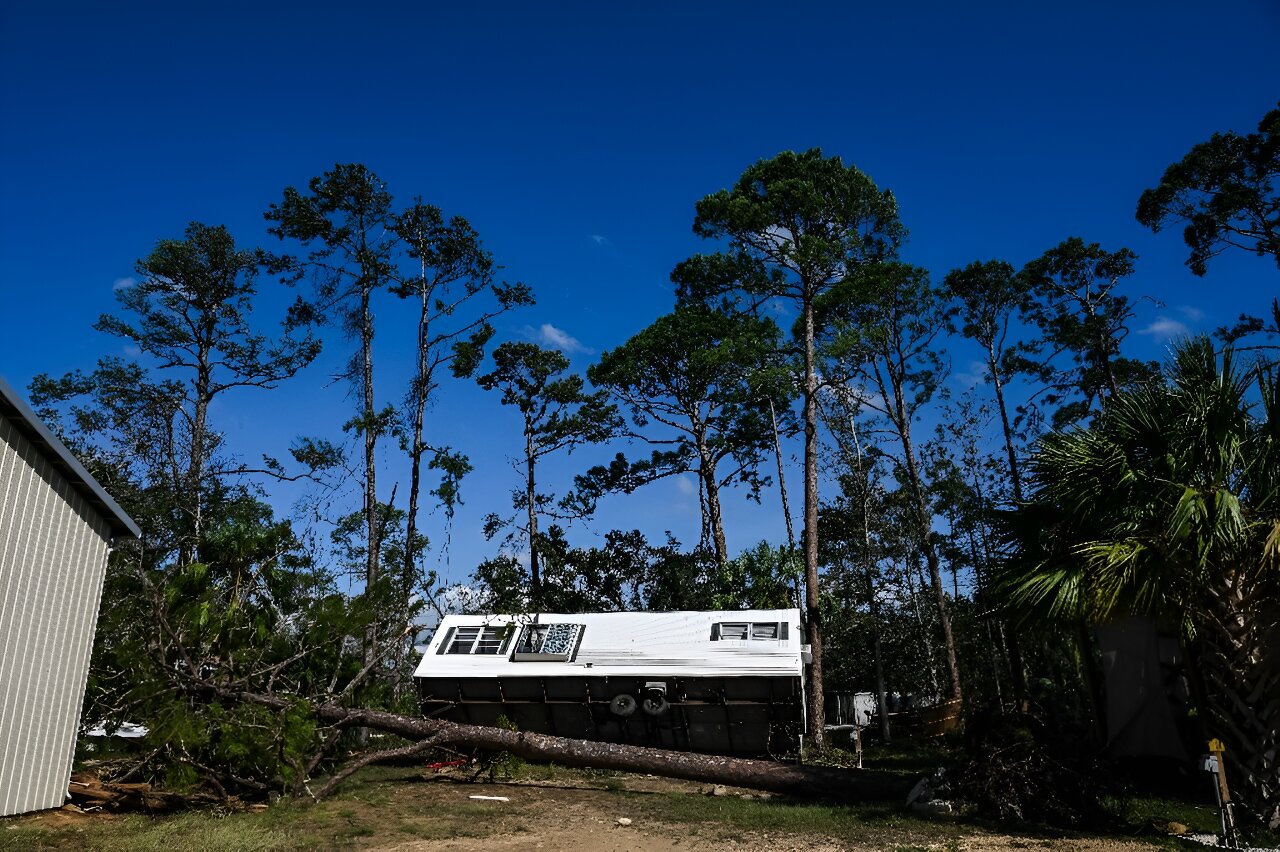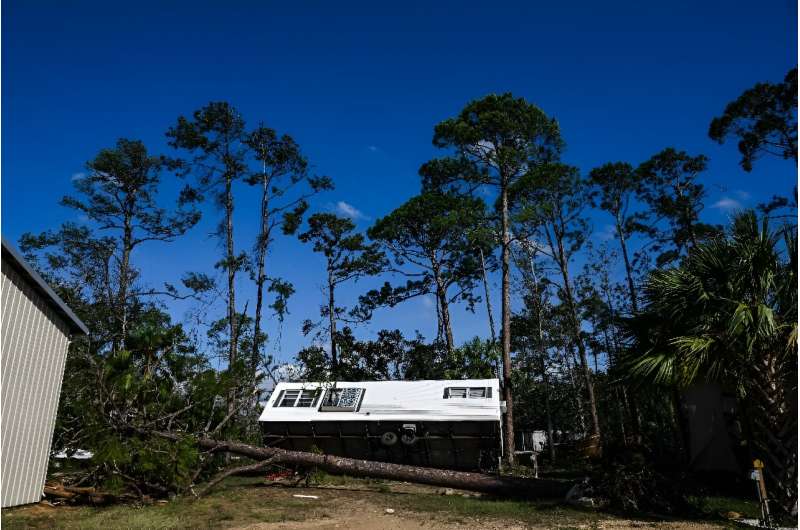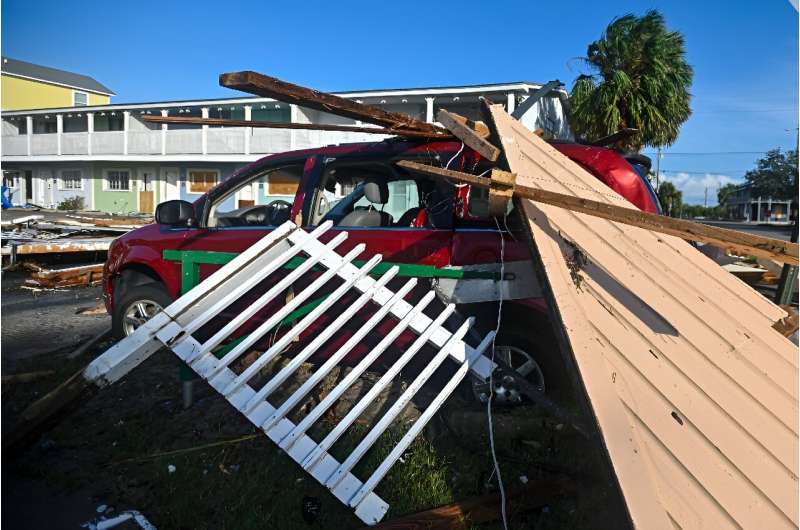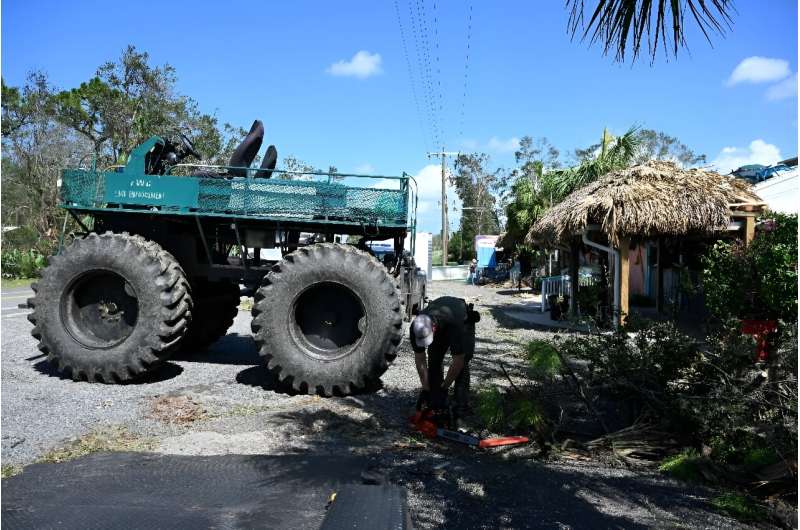

At least 44 people died across five US states battered by powerful storm Helene, authorities said Friday, after torrential flooding prompted emergency responders to launch massive rescue operations.
Roads, homes and businesses were underwater—many of them destroyed—after Helene made landfall as a Category 4 hurricane near the Florida state capital Tallahassee overnight and surged north.
As darkness settled over the region Friday, more than 4.2 million customers were without power across 10 states, from Florida up to Ohio, according to tracker poweroutage.us.
And while Helene weakened to a tropical storm and eventually a post-tropical cyclone, it has continued to wreak havoc with heavy rains that the National Hurricane Center said would result in “catastrophic and potentially life-threatening flash and urban flooding.”
In Cedar Key, an island city of 700 people just off Florida’s northwest coast, the full destructive force of the hurricane was on view.
Several pastel-colored wooden homes were completely destroyed, victims of storm surge and ferocious winds.
“I’ve lived here my whole life, and it breaks my heart to see it,” said Gabe Doty, superintendent of Cedar Key’s water and sewer district. “We’ve not really been able to catch a break around here.”
Up to 12 inches (30 centimeters) of rain was forecast in the Appalachian mountains, with isolated spots even receiving 20 inches.
In South Carolina at least 20 people have died, including two firefighters, officials said. Among the deaths were six residents of Spartanburg County, according to county coroner Rusty Clevenger.
Georgia Governor Brian Kemp’s office confirmed 15 people were killed in his state, including an emergency responder. Kemp warned that the city of Valdosta had identified 115 heavily damaged structures with multiple people trapped inside.

Florida’s toll stood at seven. Governor Ron DeSantis said the damage from Helene exceeded that of hurricanes Idalia and Debby, which both hit the same Big Bend region southeast of Tallahassee in the last 13 months.
“It’s a real gut punch to those communities,” DeSantis told Fox News.
In Perry, near where Helene slammed ashore bearing winds of 140 miles (225 kilometers) per hour, houses lost power and the gas station was flattened.
“I am Floridian, so I’m kind of used to it, but it was real scary at one point,” said Larry Bailey, 32, who sheltered in his small wooden home all night with his two nephews and sister.
Four hundred miles to the north in the Tennessee town of Erwin, a dramatic rescue operation unfolded, as more than 50 patients and staff were trapped on a hospital roof as floodwaters raged around them, local television footage showed. Helicopters were deployed in the rescue.
In neighboring Virginia, Governor Glenn Youngkin confirmed one fatality related to Helene. “This storm is not over,” he warned in a video message.
‘It looks bad’
With typhoon Yagi battering Asia, storm Boris drenching Europe, a deadly new hurricane damaging Mexico’s Acapulco and extreme flooding in the Sahel, September so far has been an unusually wet month around the world.
Scientists link some extreme weather events to human-caused global warming.
“Helene traveled over exceptionally warm ocean waters in the Gulf of Mexico,” Andra Garner, a climate scientist at Rowan University in New Jersey, told AFP.

“It’s likely that those extra warm ocean waters played a role in Helene’s rapid intensification.”
“Storm surges are getting worse,” Garner said, “because our sea levels are rising as we warm the planet.”
Curtis Drafton, a search and rescue volunteer in Steinhatchee, Florida, raised similar concerns as he tackled the aftermath of Helene and its destructive storm surge.
“We have got to start wondering: is this the new normal? Is it going to happen every year?” the 48-year-old told AFP.
Some residents in Atlanta resorted to bailing water out of ground-floor windows with buckets, while near Tampa in Florida, boats were stranded in gardens.
In the impact zone, residents had been warned of “unsurvivable” storm surge.
President Joe Biden and state authorities had urged people to heed official evacuation warnings before Helene hit, though some chose to stay in their homes to wait out the storm.
Vice President Kamala Harris said she and Biden “will continue to monitor the situation closely,” adding the administration has mobilized 1,500 personnel to support impacted communities.
The head of the Federal Emergency Management Agency, Deanne Criswell said “over 600 rescues” have been conducted.
© 2024 AFP
Citation:
US hurricane deaths rise to 44, fears of more ‘catastrophic’ flooding (2024, September 28)
retrieved 28 September 2024
from https://phys.org/news/2024-09-hurricane-deaths-catastrophic.html
This document is subject to copyright. Apart from any fair dealing for the purpose of private study or research, no
part may be reproduced without the written permission. The content is provided for information purposes only.

